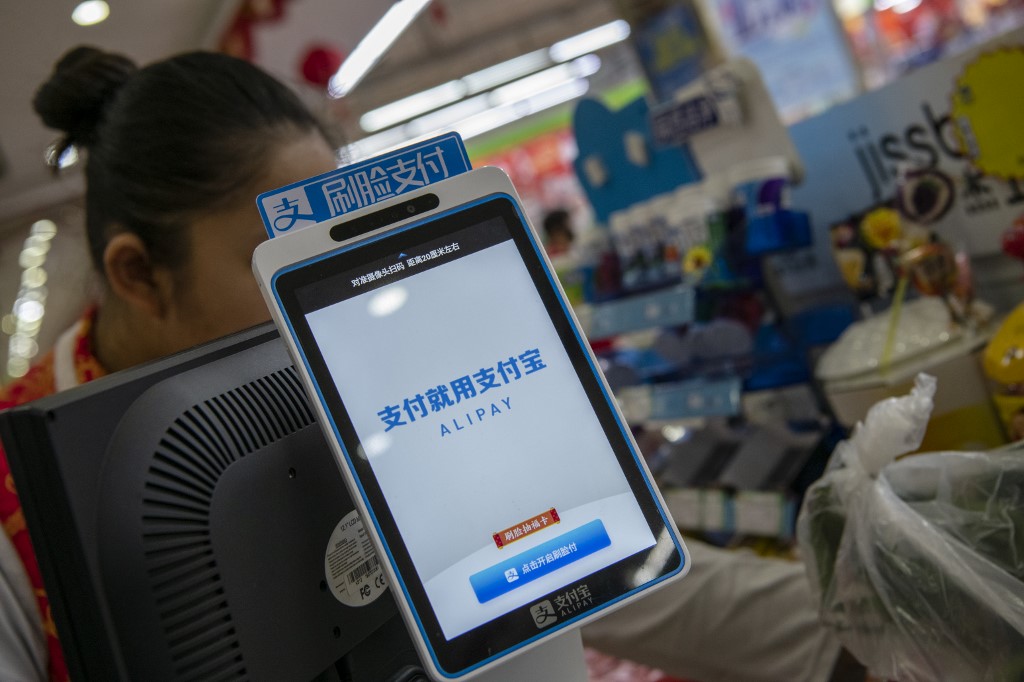(ATF) China’s sovereign digital currency is well timed, coming as it does when social distancing is being encouraged and at a time when business is increasingly migrating online.
Last month, the government said pilot programmes of the central bank digital currency (CBDC) will start soon in some parts of the country.
“In this new era of social distancing and remote working, China is in a good position to push forward its agenda of a digital currency,” said Patrick Bennett macro strategist at CIBC. “China has been ahead with its innovations in virtual banking and electronic settlement systems and this fits in well with that trend.”
In China virtual banks like e-commerce giant Alibaba’s MyBank and Internet conglomerate Tencent’s WeBank are already altering the financial services markets with their outreach to small businesses and into rural areas.
“The creation of a Chinese e-currency may be part of a process that leads to an increasingly sophisticated and rapid payments distempered for the renminbi,” said Charles Proctor, a partner at Fladgate LLP’s funds, finance and regulatory department. “This in turn may incentivise trading counter-parties to accept payment in that currency, rather than insisting on USD payments through CHAPS.”
The Clearing House Automated Payment System (CHAPS) is a real-time gross settlement payment system used for sterling transactions in the United Kingdom.
“That could clearly have geopolitical implications in undermining the international status of the dollar,” Proctor said. “However, it could also result in significant savings for Chinese importers and exporters.”
The timing is uncanny; the development of a digital currency in China comes in the midst of a war of words with the US, reviving memories of the trade war between the world’s two biggest economies, which ended in Washington imposing tariffs on more than $360 billion of Chinese goods. China retaliated with import duties of its own, worth around $110 billion, on US products.
US President Donald Trump’s accusation that Beijing deliberately mishandled the coronavirus outbreak raging around the world and Secretary of State Michael Pompeo’s claim of “enormous evidence” that the pandemic sprung from a Chinese lab was met with indignation. China’s official Xinhua News Agency said Pompeo was speaking “nonsense,” and a newscaster from state-run China Central Television accused him of “spitting poison”.
The dollar’s dominance would be hard to match. According to the IMF, more than 60% of central bank reserves, including China’s $3 trillion, were held in US dollars and 90% of forex trading was greenback-denominated.
“To say that it insulates China from the USD is unrealistic,” said Jon Vollemaere, CEO at R5FX, an electronic trading platform. “For all intents and purposes, domestically the renminbi has been an electronic currency for some time as almost everyone uses Alipay and Wepay in the major cities, there is nothing new there.”
READ MORE: Yuan and fries to go
READ MORE: Digital yuan trials to start ‘soon’
Little option
Beijing may have little option but to press ahead as it fears the “weaponization of the dollar so that it can be used as a strong arm of American foreign policy”, according to an opinion column in the state-owned China Daily.
“A sovereign digital currency provides a functional alternative to the dollar settlement system and blunts the impact of any sanctions or threats of exclusion both at a country and company level,” the column stated. “It may also facilitate integration into globally traded currency markets with a reduced risk of politically inspired disruption.”
But there are hurdles to overcome, especially when dealing with certain countries.
“If you want to buy something from the US – or many other countries – you will still need US dollars, regardless of whether you have a digital currency at home,” said R5FX’s Vollemaere.
Still countries keen to participate in the Belt and Road Initiative may continue to integrate with China, particularly in Asia.
“The digital currency project sits well with the Belt and Road Initiative, where settlements can be made using the yuan,” CIBC’s Bennett said.
But he cautioned: “It is a long way from upsetting the dollar dominance in the payment settlements business.”
Although the yuan is now a world reserve currency accounting for 10.92% of the IMF’s special drawing rights currency basket, the advent of China’s digital currency is unlikely to be a game changer.
“I see it as a non-event,” said Michael Every, head of markets research in the Asia-Pacific for Rabobank. “It is no different to a cashless payment system within China. It’s not a distributed ledger,” he added, referring to the technological backbone behind crypto-currencies such as bitcoin and Etherium.
“It’s a PBoC-monitored and controlled version,” Every said. “It does at least suggest cash might be withdrawn – but then what? Certainly no increase in global demand for CNY. Probably less!”
























